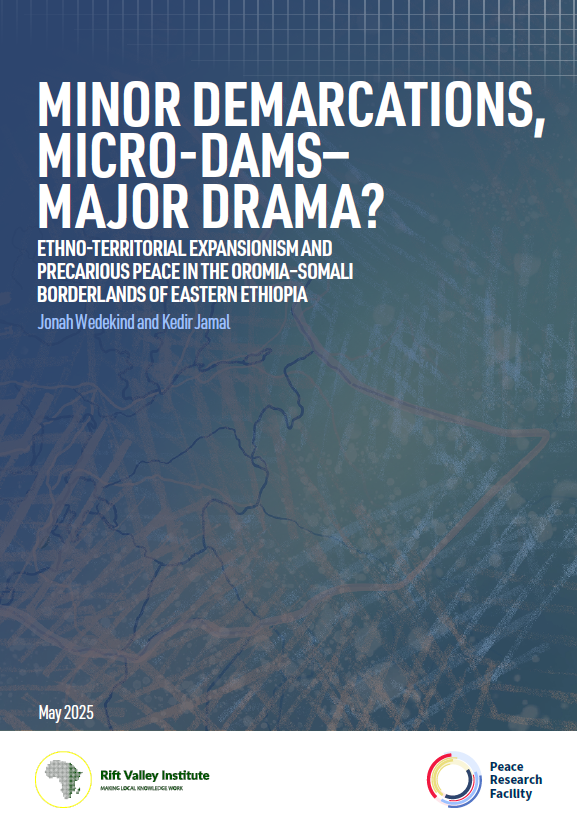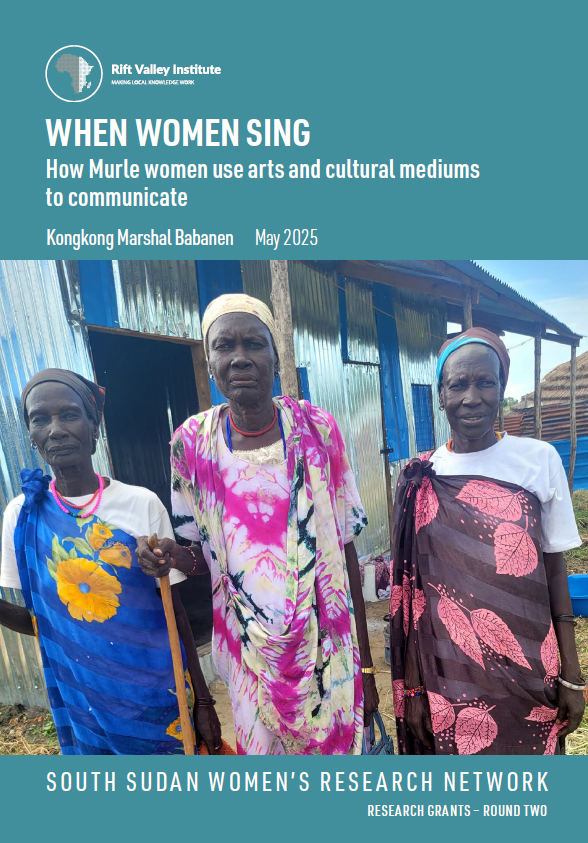Tom Porteous of Human Rights Watch reviews the Sudan Handbook. In 2004 the Rift Valley Institute organised its first Sudan field course. The course was conceived in a spirit of cautious optimism and motivated by a simple idea. Already by that time it was clear that the negotiations in Kenya between the Sudanese government and the Sudan People’s Liberation Movement (SPLM) would lead to a peace agreement that would provide an opportunity for the political transformation of the country, quite possibly including the secession of southern Sudan. Just as the peace agreement itself was sponsored by external actors – the US, the UK, the UN, Kenya and others – so it was clear that the outside world would play an important role in steering the political transition that emerged from the agreement. The Rift Valley Institute’s Sudan field course, which has taken place every year since 2004, usually at the Rumbek Senior Secondary School in Lakes State in what is now South Sudan, was designed to give diplomats, humanitarian workers, UN officials, and development professionals engaged in assisting Sudan’s transition from war to peace with some basic knowledge of the country, its history, and people.
The designers of the course believed rightly that, with or without the separation of southern Sudan, the country’s entrenched patterns of authoritarianism and decades of misgovernment and armed conflict could not be “wished away by signatures on a peace agreement,” especially at a time when the incipient boom in oil production would further raise the stakes of competition for power and resources between the central state and the various power centres of Sudan’s periphery. They therefore sought to provide international bureaucrats and diplomats (and some Sudanese) with the knowledge and background required to navigate the realities of Sudan’s complex political economy, and to appreciate the extent to which, through ignorance or short-sightedness, aid and development initiatives have contributed to the prolongation of armed conflict, authoritarian government, and political instability. Hence The Sudan Handbook.
Using a cartographic metaphor, John Ryle and Justin Willis, in their excellent introductory essay to this collection, write of the importance of 'ground-truthing,' 'the process of walking the land and discussing its features with those who live there.' Only such a process, they write, 'can turn latitude and longitude, and contours and boundary lines, into a landscape which is recognizable to those who live in it.' Those involved in the development and modernisation of Sudan, both Sudanese and foreigners, have all too often ignored the ground-truth of Sudan, and in so doing have tended to ignore the perspectives of the majority of its people, and engaged instead in top-down interventions that have largely served to entrench the worst aspects of Sudan’s political economy and undermined the prospects of the establishment, envisaged in the Comprehensive Peace Agreement, of a state based on the rule of law and respect for the rights and dignity of its population.
In the eight years since the first Sudan field course (the Rift Valley Institute has subsequently established another course on the Horn of Africa with the same high-minded purpose), the concerns that motivated its organizers have been well justified. As predicted southern Sudan voted for separation in a referendum in January 2011 and declared independence in July. What remains of Sudan in the north retains all the worst attributes of the brutish, predatory security state it had become by the turn of the 21st century. Armed conflict continues in Darfur and new conflicts erupted in 2011 in South Kordofan and Blue Nile States. The new government in the South, ruled by the SPLM, seems headed towards familiar patterns of authoritarian government and abusive security forces composed of former bush fighters. And there is a real risk of a new war between Sudan and South Sudan over unresolved details of the peace agreement. The cautious optimism of 2004 has reverted to the cautious pessimism that is understandably the default position of even the most sympathetic Sudan watchers.
All of which makes the efforts of the Rift Valley Institute to collect, preserve, and transmit knowledge and understanding of Sudan’s ground-truth the more important. This collection of essays cannot substitute for participation in the Institute’s Sudan field course; nor can it stand in for the understanding that comes from travelling in Sudan and asking questions (something that the Sudanese authorities, and chronic insecurity, have made a lot more difficult for visitors in recent years). However the Sudan Handbook’s eighteen essays, mostly by Sudanese and foreign experts who have lectured at the field course, is a valuable addition to the impressive body of work and projects of the Rift Valley Institute.
The reader will not find here a blueprint for the transition of Sudan, or rather of what are now the two Sudans, from war to peace. But that’s not the idea. Rather it provides in the words of the editors 'a critical guide to current knowledge, a collection of essays on key aspects of the country written from a range of disciplinary points of view.' Not surprisingly there is a preponderance of essays on various aspects of the recent armed conflicts in Sudan and their causes. But there are also thoughtful articles on Sudan’s history: a chapter on ancient history; a chapter on state development in Sudan from the invasion in 1821 of Muhammad Ali (the Albanian soldier who came to power in Egypt following the withdrawal of Napoleon’s three year campaign in the Middle East) up to independence (including an analysis of the Mahdist revolt in the 1880s and the Anglo-Egyptian Condominium which ruled Sudan from 1899 until 1955); and a chapter on the history, up to the Islamist coup of 1989, of the fragile independent Sudanese state that emerged in 1956 (Sudan’s first civilian government lasted less than three years before the army stepped in setting a pattern that continues). There are also useful essays on the role of political Islam in Sudan, on religious belief and practice, on local government, on Sudan’s relations with its neighbours, on land and water, on oil, a brief ethnography of the country, and even an essay on popular music in Sudan. While the essays are not footnoted, each chapter concludes with recommendations for further reading.
Measured against its objectives, the volume does have some gaps, the most serious being the near total absence of the voices and perspectives of Sudanese women. This is unfortunate because while it reflects the reality of women’s marginalisation in Sudan’s political economy, it inadvertently perpetuates it by writing women out of Sudan’s past and present. A list of key figures in Sudan’s history, culture and politics appended at the end of the volume includes but one woman: Josephine Bakhita, a Darfuri born in the second half of the 19th century who was sold into slavery, brought by an Italian diplomat to Italy, where she spent most of her life in an Italian convent, and canonized in 2000.
Another gap is the lack of analysis of the various legal aspects of Sudan’s crises, in particular there is almost no discussion of the implementation (and politicisation) of Islamic law, an important southern grievance in the SPLM’s war with Khartoum that has resurfaced as a major topic in Sudan following the separation of the South; and no analysis of the long history of human rights abuses by both government and rebel forces in Sudan and the related indictment of Sudan’s president Omar al-Bashir by the International Criminal Court, the court’s first and so far only arrest warrant against a current head of state.
Despite these omissions—enterprising readers can fill the gaps by looking elsewhere—diplomats, aid workers, and development experts heading for a tour of duty, in either of the Sudans, or both, should certainly read this collection of well written and informative essays. One hopes that the Sudan Handbook will encourage them to be more sceptical about some of the official blueprints and roadmaps for Sudan’s future, and more attuned to the perspectives and aspirations of the ordinary Sudanese men and women they meet as they go about their work —more mindful, in fact, of Sudan’s ground-truth.
Tom Porteous is based in Washington DC as the Deputy Program Director at Human Rights Watch. He has worked extensively in Africa as a journalist and diplomat.


